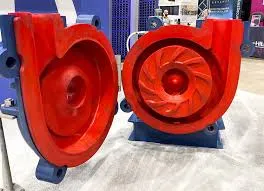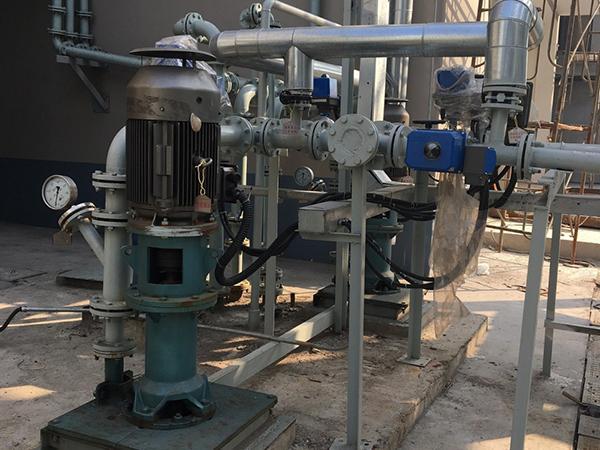Lithuanian
- Afrikaans
- Albanian
- Amharic
- Arabic
- Armenian
- Azerbaijani
- Basque
- Belarusian
- Bengali
- Bosnian
- Bulgarian
- Catalan
- Cebuano
- Corsican
- Croatian
- Czech
- Danish
- Dutch
- English
- Esperanto
- Estonian
- Finnish
- French
- Frisian
- Galician
- Georgian
- German
- Greek
- Gujarati
- Haitian Creole
- hausa
- hawaiian
- Hebrew
- Hindi
- Miao
- Hungarian
- Icelandic
- igbo
- Indonesian
- irish
- Italian
- Japanese
- Javanese
- Kannada
- kazakh
- Khmer
- Rwandese
- Korean
- Kurdish
- Kyrgyz
- Lao
- Latin
- Latvian
- Lithuanian
- Luxembourgish
- Macedonian
- Malgashi
- Malay
- Malayalam
- Maltese
- Maori
- Marathi
- Mongolian
- Myanmar
- Nepali
- Norwegian
- Norwegian
- Occitan
- Pashto
- Persian
- Polish
- Portuguese
- Punjabi
- Romanian
- Russian
- Samoan
- Scottish Gaelic
- Serbian
- Sesotho
- Shona
- Sindhi
- Sinhala
- Slovak
- Slovenian
- Somali
- Spanish
- Sundanese
- Swahili
- Swedish
- Tagalog
- Tajik
- Tamil
- Tatar
- Telugu
- Thai
- Turkish
- Turkmen
- Ukrainian
- Urdu
- Uighur
- Uzbek
- Vietnamese
- Welsh
- Bantu
- Yiddish
- Yoruba
- Zulu
Telephone: +86 13120555503
Email: frank@cypump.com
Bir . 03, 2025 16:35 Back to list
Reliable Sewage Tank and Pump Systems Buy Now
- Core system components and functional requirements
- Performance metrics and technological advancements
- Manufacturer capability comparison analysis
- Application-specific engineering solutions
- Municipal infrastructure implementation case
- Industrial wastewater management scenario
- Selection framework and lifecycle considerations

(sewage tank and pump)
Understanding Sewage Tank and Pump System Fundamentals
Modern sewage management relies on integrated tank and pump configurations that serve as critical infrastructure across residential, commercial, and industrial applications. These systems handle biological waste processing and transportation through collection chambers, treatment stages, and effluent dispersal mechanisms. The typical configuration includes primary settlement tanks for solids separation, followed by pumping mechanisms that transport effluent to secondary treatment or designated discharge points. Proper sizing calculations must account for population equivalents - generally allowing 150 gallons per bedroom daily - with tank capacities ranging from 1,000 gallons for single-family homes to 500,000+ gallons for municipal installations.
Submersible pumps engineered specifically for sewage applications incorporate hardened stainless steel impellers and vortex technology capable of handling solids up to 3 inches in diameter. Systems utilizing variable frequency drives (VFDs) achieve 30% energy savings compared to constant-speed models, while dual-pump configurations provide essential redundancy for high-priority installations. Manufacturers recommend tank-to-pump capacity ratios between 2:1 and 3:1 to prevent pump cycling issues, with retention time between 18-24 hours for adequate solids separation.
Technical Advantages and Performance Innovations
Leading sewage pumping solutions incorporate significant engineering improvements that enhance operational reliability. Permanent magnet motor technology delivers 15% higher efficiency than conventional asynchronous motors while reducing heat generation. Advanced monitoring systems equipped with IoT sensors track operational parameters including vibration spectra (maintained below 4.5 mm/s RMS), temperature differentials, and seal integrity. These systems provide automated alerts when parameters deviate beyond acceptable thresholds, enabling predictive maintenance.
Latest innovations include non-clog vortex impellers capable of handling stringy materials without tangling, reducing service interventions by up to 40%. Manufacturers now offer factory-configured solutions integrating level control floats, alarm systems, and motor protection devices within explosion-proof enclosures certified to IP68 standards. Corrosion resistance has been significantly improved through duplex stainless steel construction (EN 1.4404) and epoxy powder coatings exceeding 10,000 hours in salt spray testing (ASTM B117).
Manufacturer Capability Comparison
| Parameter | Xylem Flygt | Sulzer ABS | KSB Amarex | Franklin Electric |
|---|---|---|---|---|
| Max Solids Handling | 3" diameter | 2.5" diameter | 3" diameter | 2" diameter |
| Head Capacity | 200 ft | 180 ft | 190 ft | 150 ft |
| Energy Efficiency | IE4 class | IE3 class | IE4 class | IE3 class |
| Corrosion Resistance | SS 316L | SS 304 | Duplex SS | Epoxy coated |
| Warranty Period | 5 years | 3 years | 4 years | 2 years |
| Remote Monitoring | Yes (SmartRun) | Optional | Yes (AmaSmart) | No |
Application-Specific Engineering Solutions
Optimal system configurations vary significantly across operational contexts. Residential installations typically employ grinder pumps handling 20-40 gpm flows within 500-1500 gallon tanks constructed from polyethylene. Commercial projects require higher-capacity sewage ejector pumps managing 50-150 gpm flows through glass-fused-to-steel tanks featuring cathodic protection. Industrial processing plants demand explosion-proof submersibles engineered to manage extreme pH fluctuations and elevated temperatures up to 140°F.
Specialized scenarios include high-head mountain installations requiring multistage pumps generating 450+ PSI discharge pressure and food processing facilities utilizing chopper pump technology that macerates solids to prevent pipe blockages. Engineering considerations encompass seismic anchoring systems for earthquake zones (Zone 4 requirements), ATEX-rated components for petrochemical environments, and stainless steel fasteners for coastal corrosion resistance.
Municipal Wastewater Treatment Case Study
The Portland Water District implemented sewage tank and pump
upgrades across 17 lift stations serving 185,000 residents. Conventional centrifugal pumps were replaced with VFD-equipped Flygt units featuring adaptive impeller technology. Engineering specifications included:
- 450 horsepower pumping capacity per station
- Bi-directional self-cleaning impellers
- 15 ft/sec scouring velocity maintenance
- Integrated H₂S gas monitoring
The project documented 28% energy reduction and 73% decrease in maintenance interventions across the network. Predictive analytics identified bearing degradation at three stations 2-3 months before expected failure, preventing overflow incidents. Post-implementation monitoring confirmed 99.4% operational availability during the subsequent storm season.
Industrial Processing Plant Implementation
Beef processing facility wastewater operations were redesigned using Sulzer ABS submersible chopper pumps handling blood byproducts, fat particles, and connective tissue. The system incorporated 10,000-gallon duplex stainless steel collection tanks with tapered bottoms for solids concentration. Operational parameters:
- 75 gpm sustained flow rate with 130 gpm peak capacity
- Bypass grinders processing 8 tons/hour tissue waste
- Integrated steam injection maintaining 140°F fluid temperature
- Automated flushing cycles preventing fat solidification
This configuration eliminated 5-7 weekly pipe blockages experienced previously and reduced lagoon cleaning frequency from quarterly to annually. Wastewater BOD (Biological Oxygen Demand) levels decreased 60% due to improved particle size reduction prior to aerobic treatment.
System Selection Considerations and Lifecycle Management
Selecting appropriate sewage pump and tank configurations requires comprehensive assessment of flow dynamics, fluid characteristics, and operational requirements. Key evaluation factors include hydraulic load profiles analyzing peak-to-average flow ratios, abrasion potential from suspended solids concentration, and chemical compatibility between materials and wastewater composition. Energy consumption modeling should compare standard NEMA premium efficiency motors against permanent magnet options with 15-20% higher efficiency premiums.
Lifecycle cost analysis should encompass initial installation expenses (approximately $15,000 for residential systems), operational energy consumption ($4,500 annually for 1 HP continuous operation), and maintenance requirements ($350-$900 per service event). Operators should implement quarterly performance verification testing including amperage draw analysis, flow rate confirmation, and seal integrity checks. Advanced operations utilize cloud-based monitoring systems that track performance degradation curves to optimize component replacement timing.

(sewage tank and pump)
FAQS on sewage tank and pump
Sewage Tank and Pump FAQsHow does a sewage tank and pump system work?
Q: What is the operational mechanism of a sewage tank and pump setup?A: Sewage flows into the tank where solids settle and liquids separate. The pump activates automatically when liquid reaches a preset level, ejecting effluent to drainage fields or mains. This prevents overflow and ensures continuous waste processing.
What size septic tank and pump do I need?
Q: How to determine the appropriate septic tank and pump capacity for my property?A: Tank size depends on household size and daily water usage (e.g., 1,000-1,500 gallons for 4 people). Pump horsepower (0.5-2 HP) varies with vertical lift and horizontal run. Consult local codes and a professional for precise calculations.
How often should a sewage pump be maintained?
Q: What’s the recommended maintenance schedule for sewage pumps in tanks?A: Inspect pumps every 6-12 months for debris buildup or wear. Test floats and alarms quarterly. Replace worn components like seals or impellers every 3-5 years to prevent failures.
Can a sewage pump handle solid waste?
Q: Are sewage tank pumps designed to process solid materials?A: Yes, specially designed effluent/sewage pumps grind solids before pumping. Grinder pumps handle thicker waste (e.g., 2-inch solids), while standard models manage smaller particles. Always match pump type to your system’s waste composition.
Why choose an integrated sewage pump and tank system?
Q: What are the advantages of combined sewage pump and tank units versus separate components?A: Integrated systems offer space efficiency, simplified installation, and built-in safeguards like flood sensors. They optimize flow control in tight spaces and reduce maintenance coordination issues. Ideal for residential or light commercial use.
-
High-Performance Septic Tank Pumps for Reliable Wastewater Management
NewsJul.26,2025
-
High Efficiency Horizontal Split Case Pump for Industrial Use
NewsJul.25,2025
-
Flue Gas Desulfurization Pump for Efficient Chemical Processing
NewsJul.24,2025
-
High-Efficiency Axial Flow Pump for Water Transfer & Irrigation
NewsJul.23,2025
-
High-Efficiency Horizontal Split Case Pump for Industrial Use
NewsJul.22,2025
-
Reliable Septic Tank Pumps | Durable & Clog-Resistant
NewsJul.22,2025










